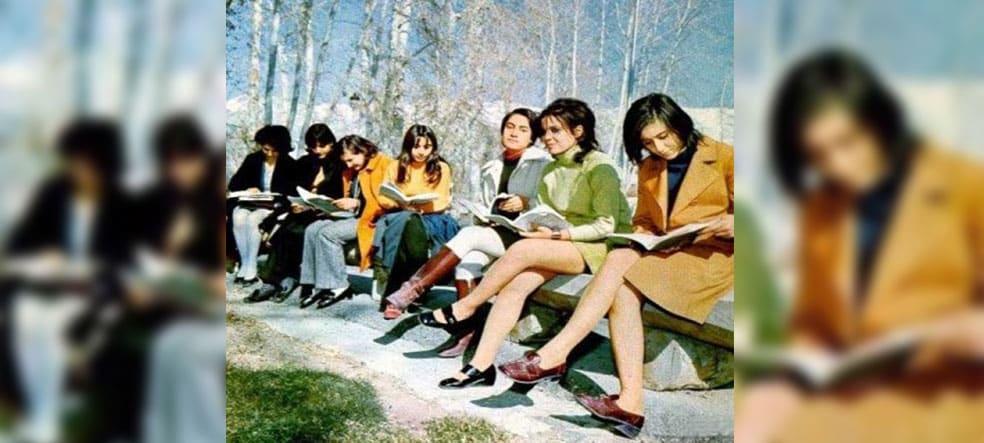
This is Afghanistan in 1968. Educated females wearing mini-skirts could be found in the cities. But the countryside remained more traditional. Courtesy Bill Podlich
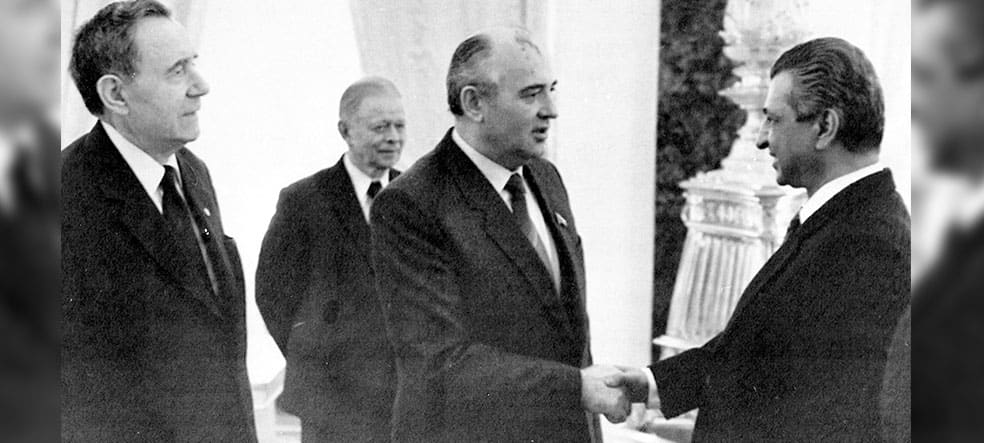
Soviet leader Mikhail Gorbachev shakes hands in the Kremlin with Babrak Karmal, Chairman of the Revolutionary Council of Afghanistan. After the USSR’s invasion of Afghanistan in 1979, the Soviet-appointed leaders had increasingly difficulty maintaining their grip on the country… © Reuters
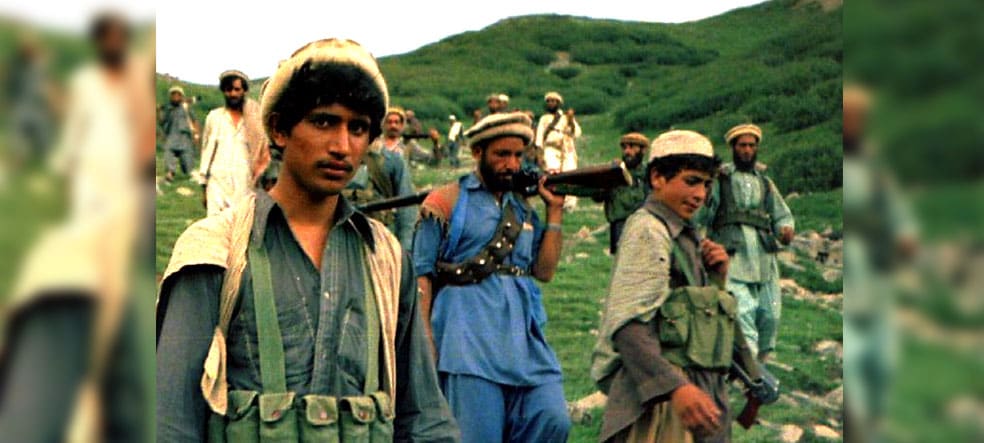
… And this is one of the main reasons why. Mujahideen fighters, seen here in the Durand border region of Pakistan, waged a guerilla war which weakened the authority and power of the Kabul authorities. © Erwin Franzen
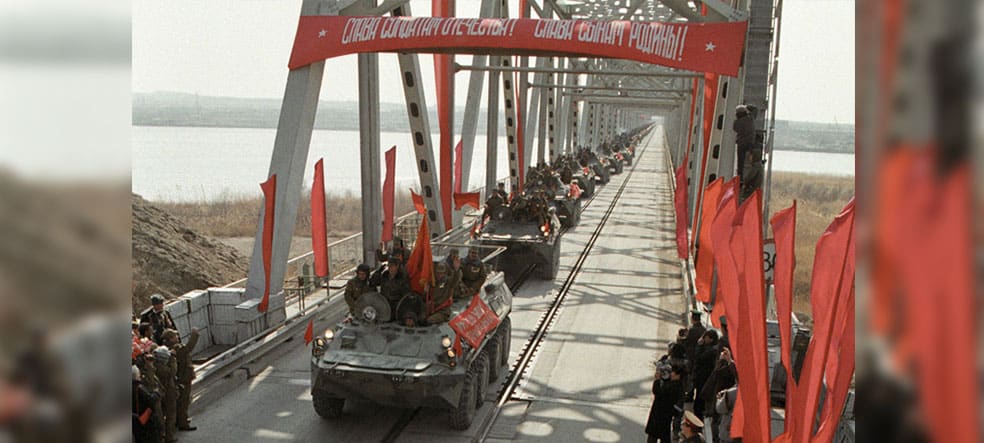
The Soviets succumbed to the inevitable. With a weakened economy, internal divisions and a move to better integrate into the international community, the Soviets decided it was time to leave Afghanistan, around 10 years after invading.

The moment when the Taliban became a government. In this photo, Islamic militiamen celebrate the seizure of the Afghan capital inside the presidential palace September 27, 1996. Afghan President Burhanuddin Rabbani and Prime Minister Gulbuddin Hekmatyar fled from the capital while former president Najibullah was hanged with other close relatives. © Reuters
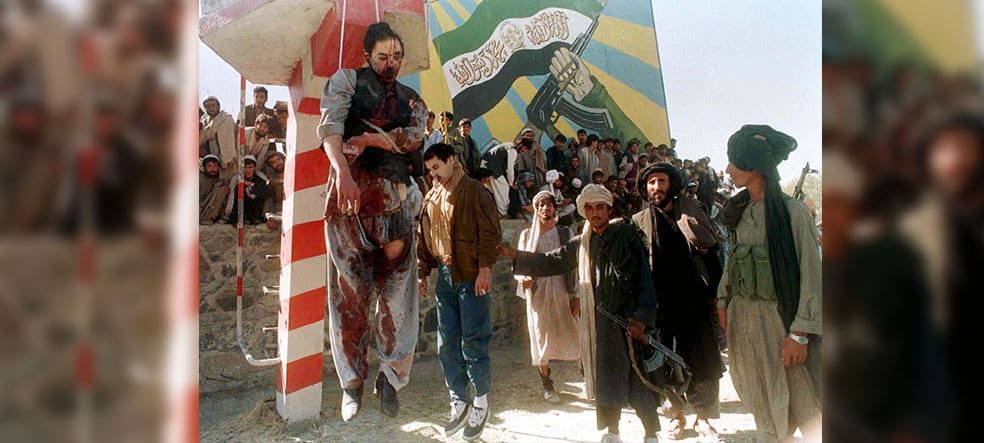
Afghanistan's former president Najibullah (L) and his brother Shahpur Ahmadzai are hanged at the Ariana square in Kabul, September 27, 1996, after it fell to the Taliban Islamic militia. Afghanistan's Taliban Islamic militia declared it would enforce an Islamic system in the country. © Reuters
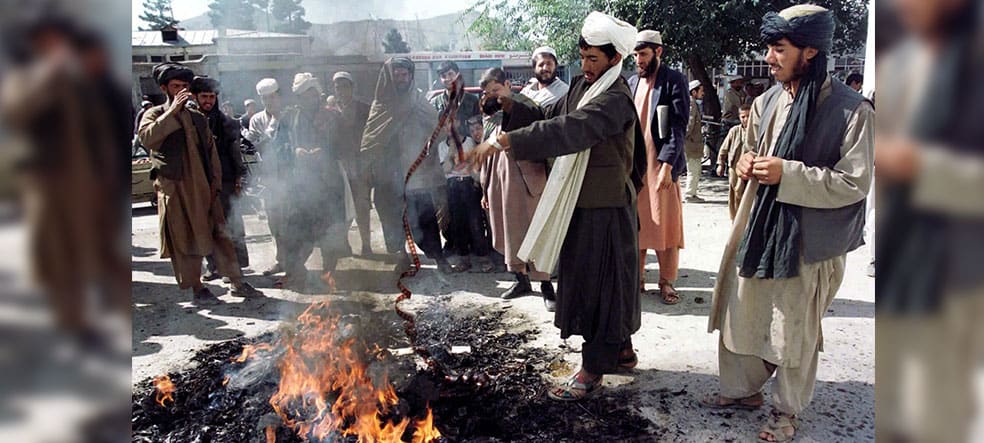
A sign of things to come. The Taliban immediately set about imposing their radical version of Islam. Movie films (pictured) were destroyed in a bonfire in front of downtown Kabul's Zaynab cinema October 14, 1996. Bans extended to music, television, alcohol and more. © Reuters
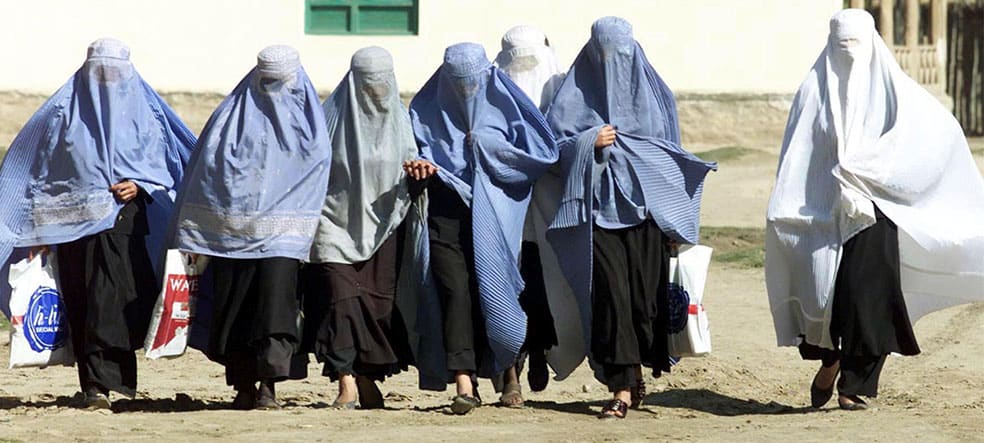
Females would suffer heavily under the Taliban. When allowed out of the home, Afghan girls would have to wear the traditional burqa veil. Education of women was frowned upon. Women’s main role was to produce more Islamic fighters.
© Reuters
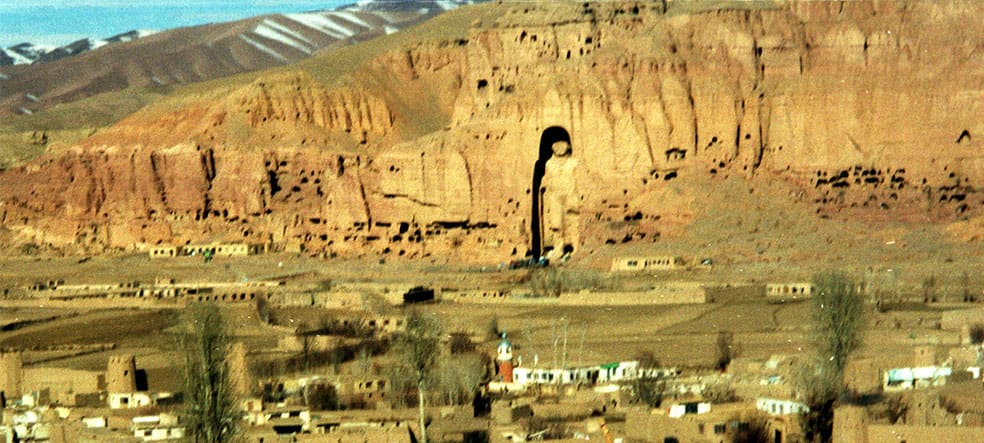
On a direct order from Taliban leader Mullah Omar, the 1,500 year old Bamyan Buddhas were blown up. Because they were idols.
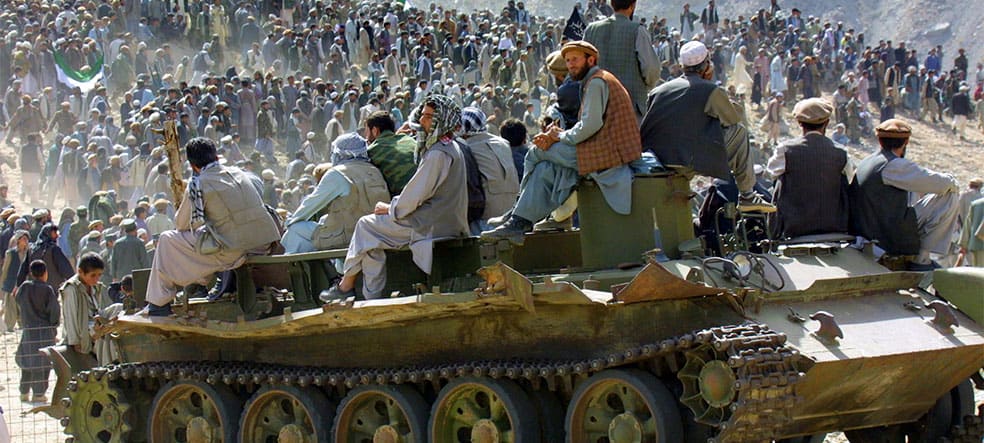
People climb up to Saricha village, some 160-kms from Kabul to bury Ahmad Shah Massoud, an Afghan fighter and leader of millions. Nicknamed the "Lion of Panjsher", Massoud died from wounds he received after two ‘journalists’ interviewing him detonated suicide bombs on 9 September 2001, just two days before the attacks in the US. © Reuters
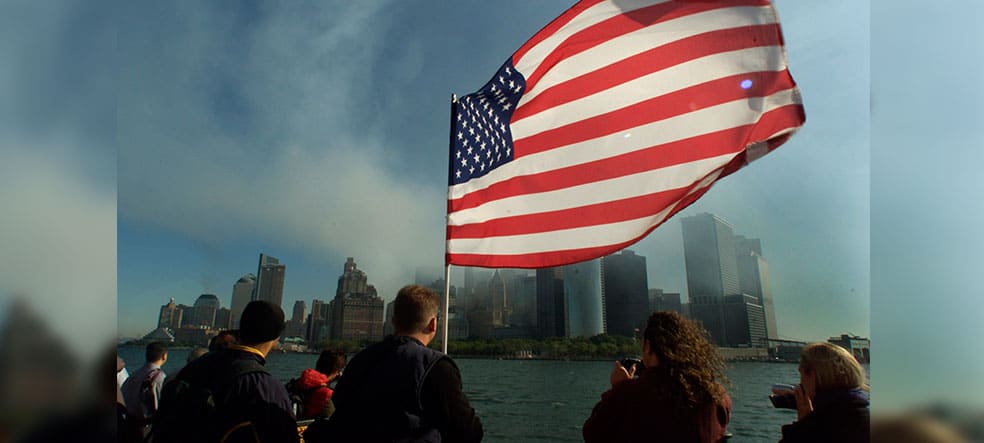
A passenger flies the American flag on a commuter ferry from Staten Island to Manhattan. This was the first day the New York Stock Exchange opened its doors since the collapse of the World Trade Center's twin towers nearly a week before. © Reuters/Ruben Sprich
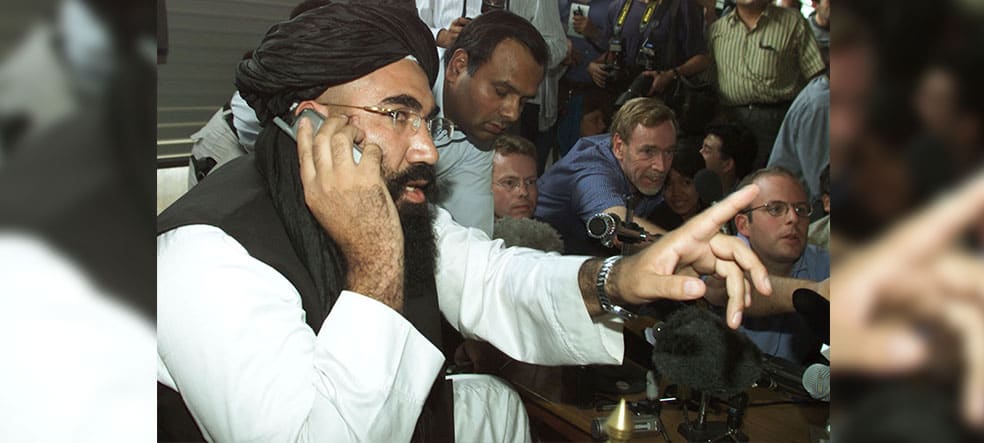
From Islamabad to Guantanamo. TheTaliban’s ambassador to Pakistan, Abdul Salam Zaeef, was on screens worldwide following the 9/11 attacks. He acted as a de facto spokesperson for the Taliban in response to US demands that Afghanistan give up the organizers of the attacks, and specifically Osama bin Laden. The Taliban’s defence of the organizers led to the first military action to oust the Taliban – the US-led operation Enduring Freedom.
© Reuters/Aziz Haidari

Enduring Freedom – US Marines Expeditionary Unit leads others to a security position after seizing a Taliban forward-operating base.
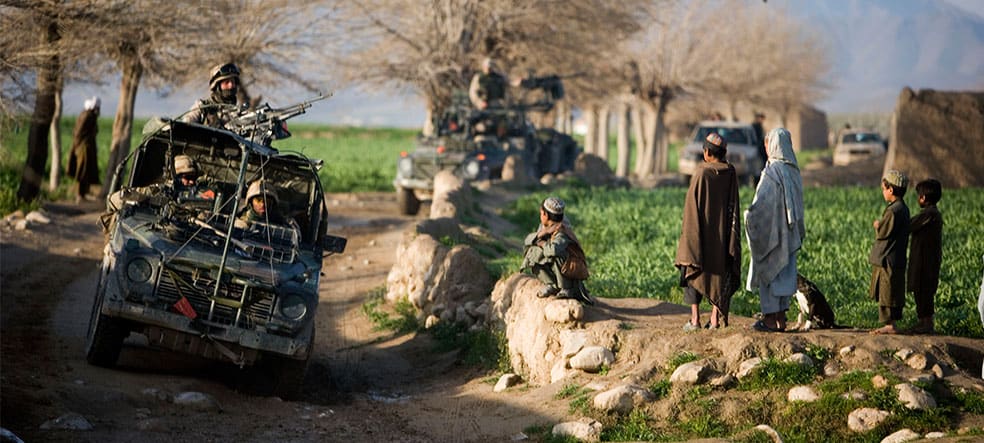
NATO took over the lead of the international effort in Afghanistan from 2003 in Afghanistan. Following a modest start, it ramped up its efforts over the next 11 years to provide a force of over 150,000 soldiers from over 50 countries, drawn from both within and outside NATO.
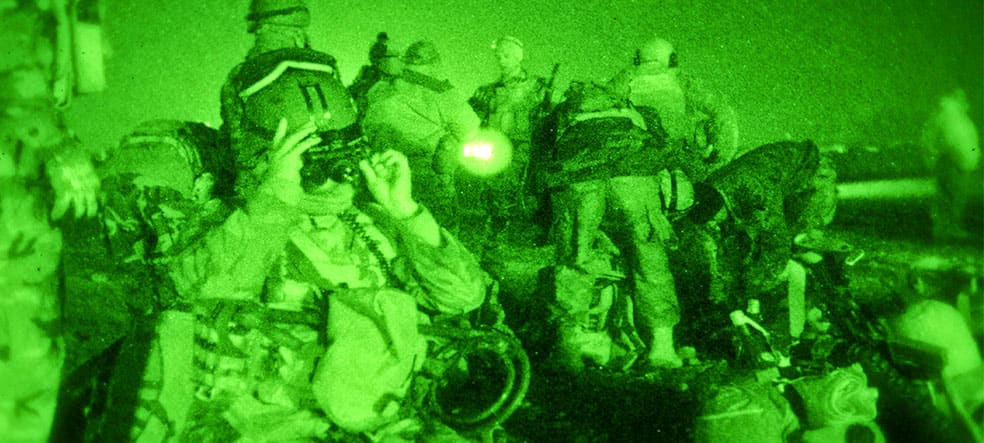
Teach a man to fish. An Afghan Soldier with 3rd Commando Kandak makes adjustments to his mounted night vision device while fellow Commandos and US soldiers with Special Operations Task Force - South conduct final mission preparations before an operation to remove insurgents from Lam village, Khakrez District.
© US Army photo by Spc. Daniel P. Shook
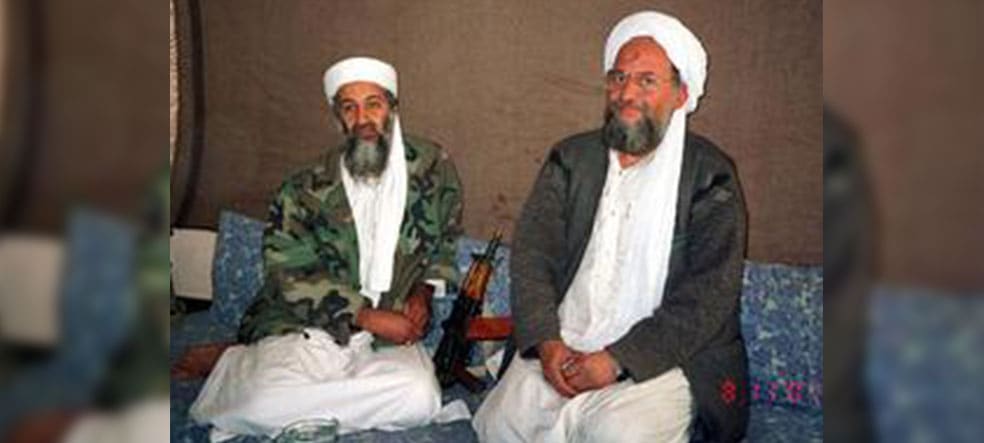
Osama bin Laden (L) sits with Al Qaeda's top strategist and second-in-command Ayman al-Zawahri in this 2001 file photo. Following bin Laden’s death in 2011, al-Zawahri became al-Qaeda’s leader. © Reuters/Hamid Mir
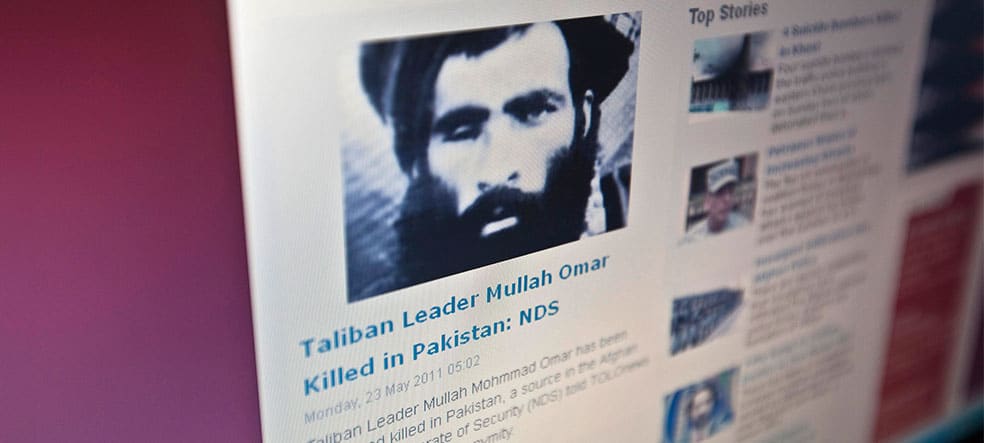
Tolonews website runs a story on its front page reporting on the death of Taliban leader Mullah Mohammad Omar in Kabul May 23, 2011. But it proved to be a false lead - and Omar continues to be the Taliban’s spiritual leader.
© Reuters/Ahmad Masood
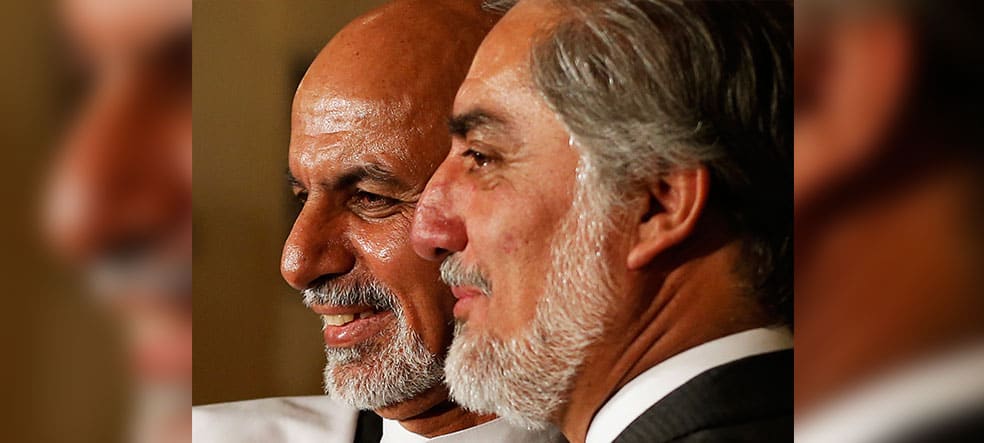
Afghan presidential candidates Ashraf Ghani Ahmadzai (L) and Abdullah Abdullah (R) have to move from Presidential candidate rivals to working in a new inclusive government. Following disputes over the results of the country’s most recent election, the two have joined forces, with Abdullah taking a ‘chief executive’ role in the Ghani-led government.
© Reuters/Mohammad Ismail
